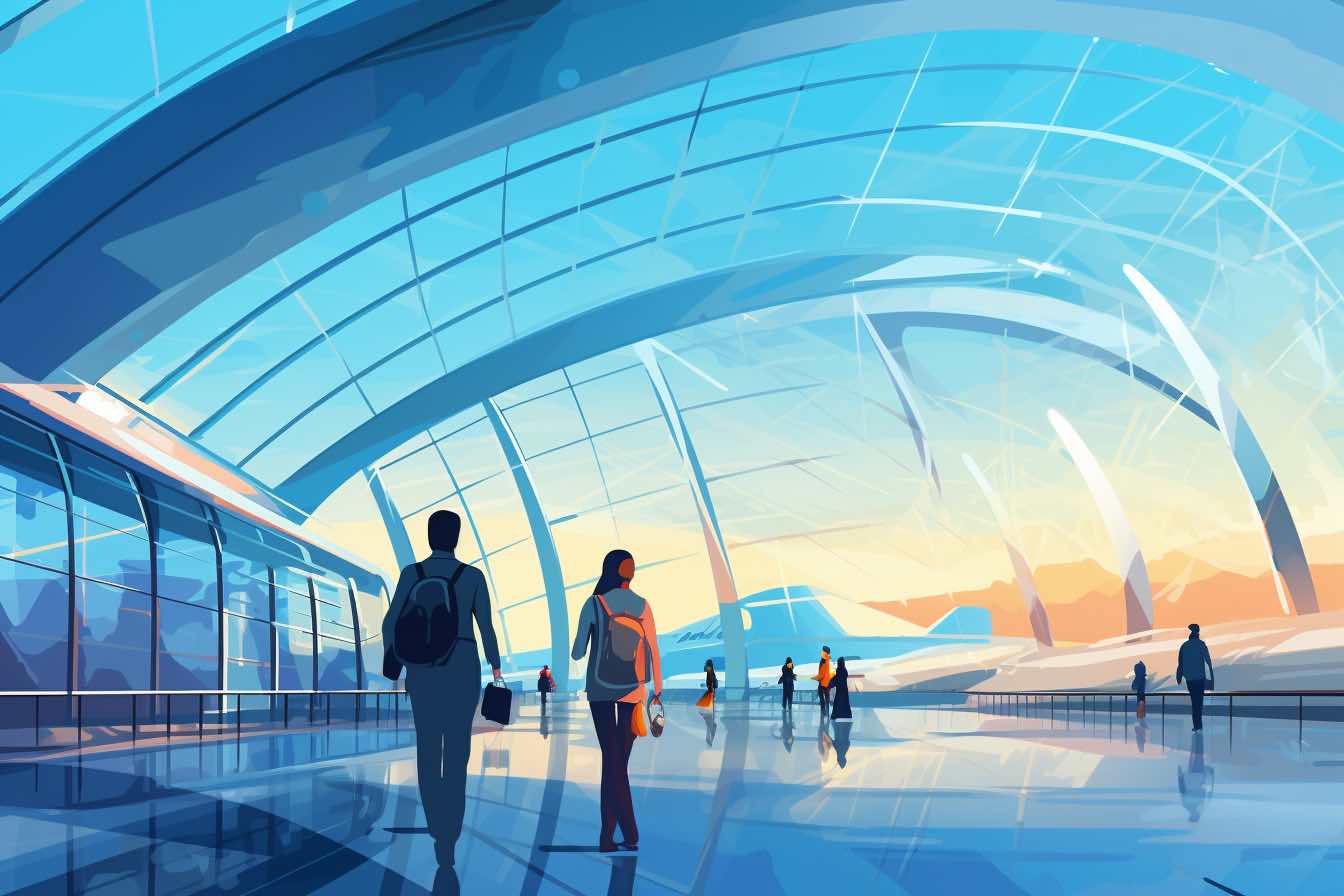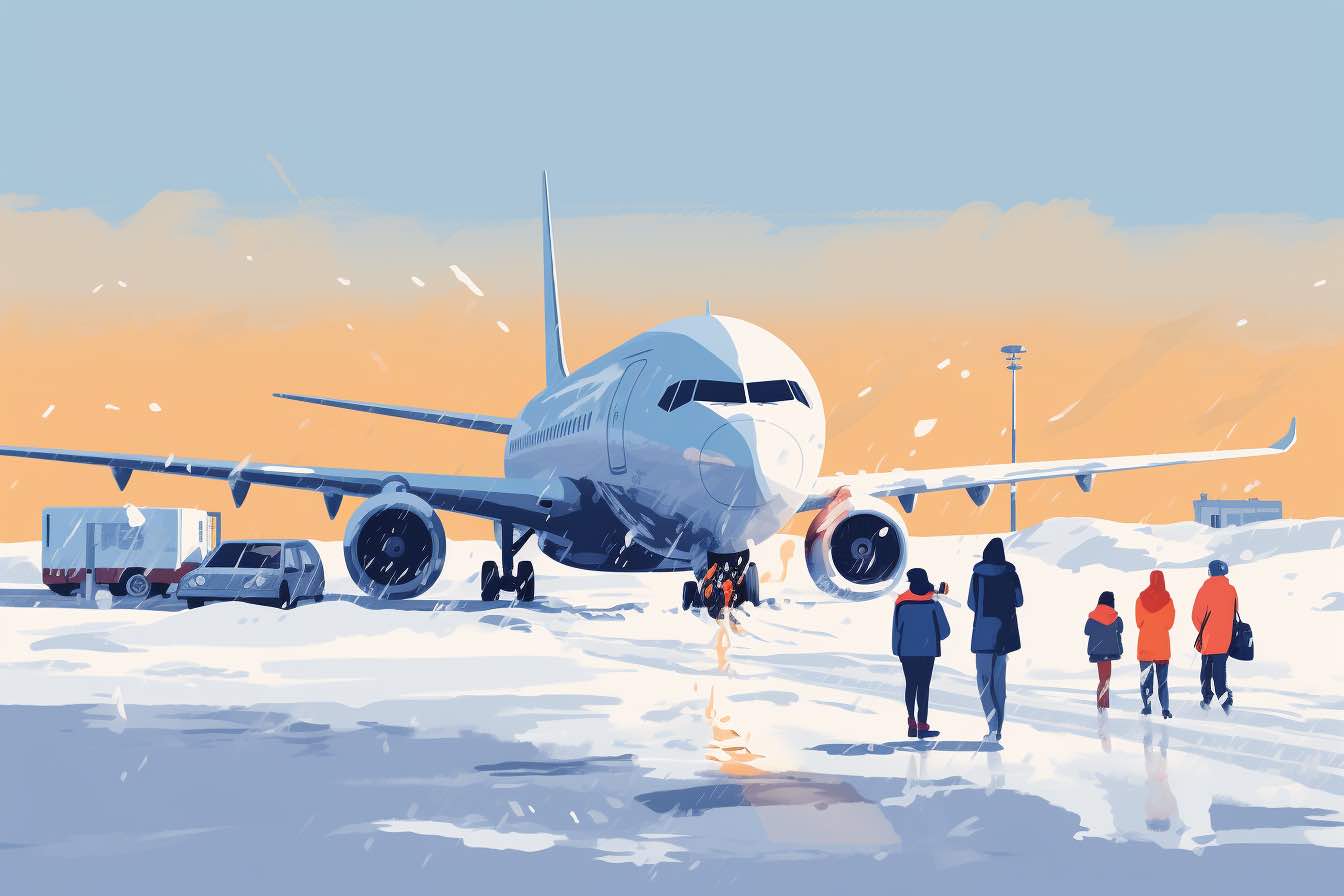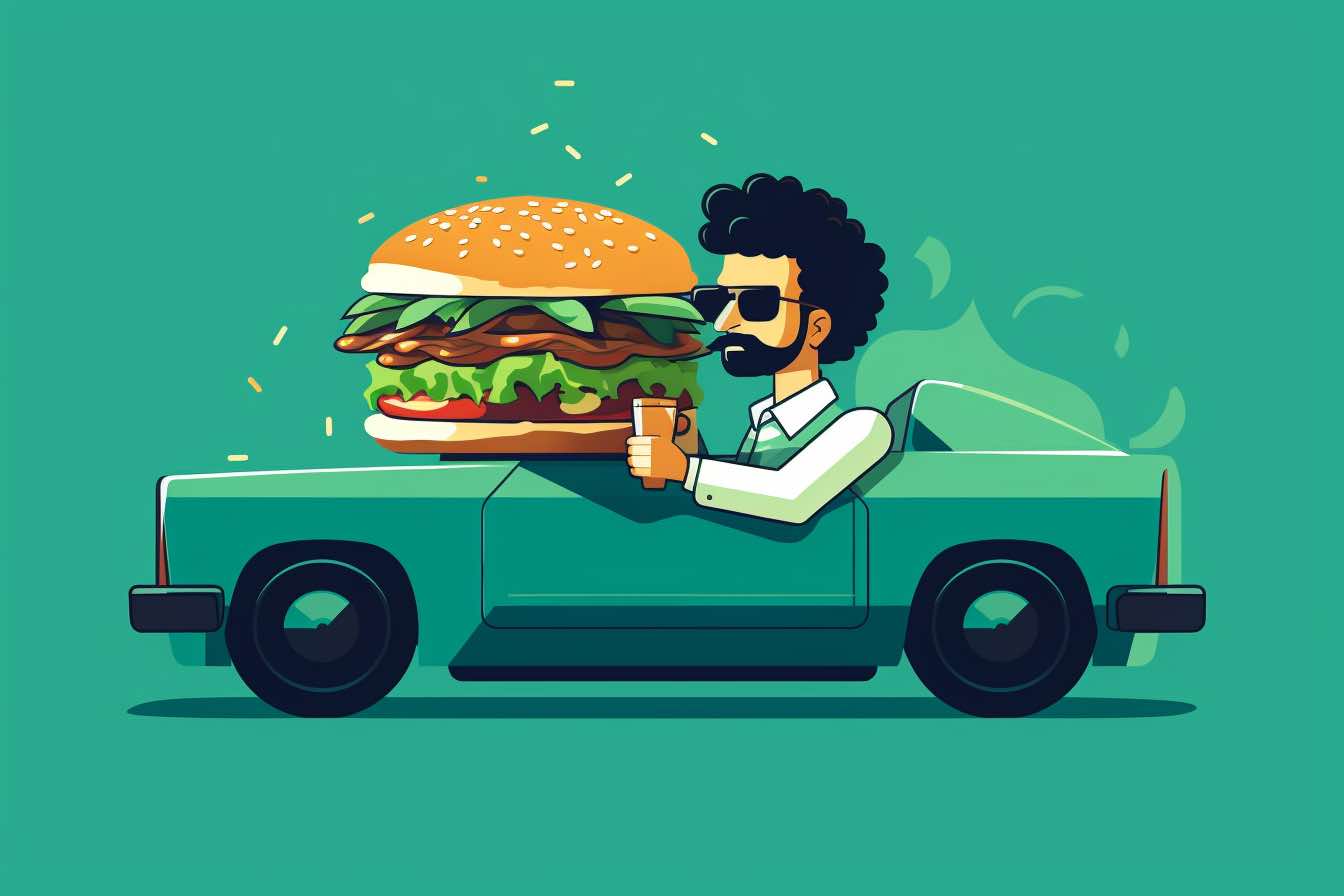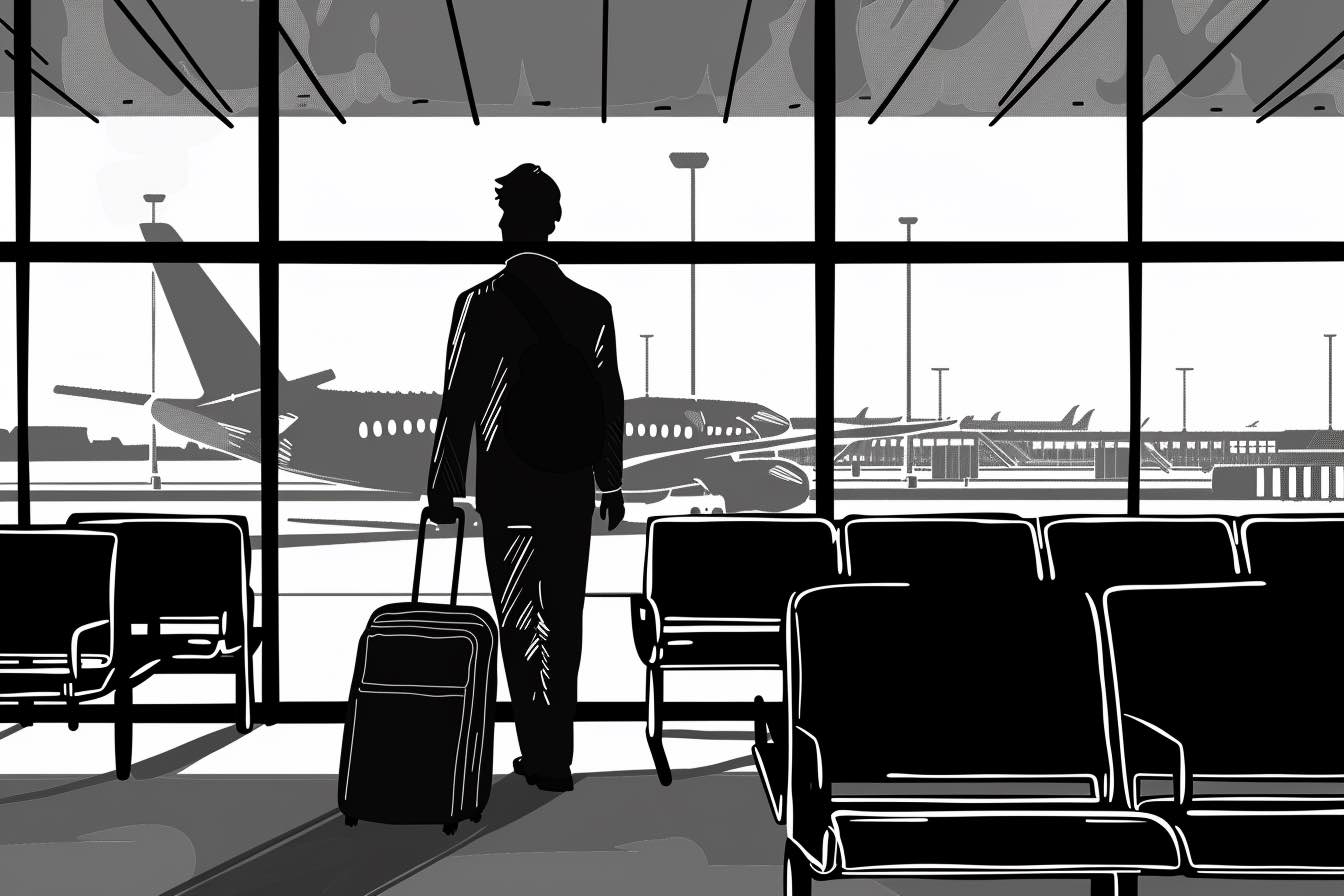Airports, train stations and bus terminals are probably the last places you want to get stuck when you’re traveling. Do I have to tell you why? There’s no place to sleep, food options are limited and expensive, and the bathrooms — yuck!
Not all travel terminals are the same. But you can plan your trip to have the best possible experience. No joke: Your stopover can be one of the best parts of your trip.
Essential terminal terminology
If you’re traveling, it helps to know a few key terms and definitions.
What’s a hub?
Airports come in all shapes and sizes, from small regional airports with little more than one terminal, to enormous complexes with shopping areas and gourmet restaurants. Most major airlines run what we call a hub-and-spoke system. This means all flights go through one or two airports (the hubs) to outlying smaller airports (the spokes).
So, if you’re flying on United Airlines from one side of the country to another, for example, your hub airport will probably be Chicago, and you’ll make your connection there. If you’re flying on Delta, you’ll get to know its hub in Atlanta.
What’s a regional airport?
A regional airport is a smaller airport, with limited passenger facilities and amenities. It serves a smaller geographic area, it rarely has customs and immigration facilities, and it may not have a significant TSA presence. Normally, the planes operating out of a regional airport are smaller — either regional jets or turboprops. You may start your trip at a regional airport, but in the 21st century, you’ll probably transit through a hub. Long Beach airport in Southern California and Lehigh Valley International Airport in Allentown, Pa., are classified as regional airports.
What’s the difference between a stopover and a layover?
Travel providers often use the terms stopover and layover interchangeably, but they do not always mean the same thing. A stopover is a brief stop in one place that doesn’t include an overnight stay. A layover is a stop that includes an overnight stay. So when someone tells you that your travel itinerary includes a layover, look for a hotel reservation — and if you don’t see one, get ready to sleep on the terminal floor.
What’s a “legal” connection time?
Do you have enough time to catch a connecting flight, train, or bus? Connections are pretty much the same, regardless of your mode of travel. Computer reservations systems have a built-in “legal” connection time that warns your travel agent or online travel site when a connection is too tight. Some systems won’t allow booking if the connection is too tight.
As a general rule, you should have at least one hour to make a connection on a domestic flight and two hours for an international flight. Still, some experienced air travelers add an extra half-hour to each of those times, depending on the airport or the time of year they’re traveling. As you plan your travel, be aware that transit times through bus and train terminals vary, but are generally shorter.
If you miss your connection, you’ll be spending a lot of time in the terminal. Here are a few ways to avoid that.
Book your tickets at the same time from the same source
If you book your flight from point “A” to point “B” through one agency, and from point “B” to point “C” through another, then airline 1 doesn’t know about the itinerary on airline 2. The two flights must be on the same reservation number to comply with minimum connection times, as well as to ensure the transfer of your luggage to your final destination.
Just because you can doesn’t mean you should
Whether you’re booking online or by phone, you need to keep your own limits in mind. If you move slowly or like to take it easy, don’t just book a legal connection. Give yourself more time. For example, if the long lines at an airport like Miami are on your itinerary, add an extra hour or two to your connection.
A connected itinerary
Generally, if your itinerary is all on the same reservation number, you and your bags will be taken care of if you miss your next flight, train or bus. At a minimum, you won’t have to pay for a new ticket. Often, airlines will also pay for your hotel and meals while you wait. Amtrak will offer housing and meals to connecting passengers delayed overnight. Read your contract of carriage for details.
What’s the biggest problem I’ll run into at the airport?
Discounting the TSA and airlines, the biggest problem — believe it or not — is parking. For some airports, the biggest generator of revenue is parking, and it can be pricey. Be aware that local governments operate airports, not airlines.
Dozens of private parking lot services are likely to serve the airport, keeping rates competitive. In addition, you may find nearby hotels with sleep-and-fly deals, which allow you to check into a hotel the night before your flight, and then leave your car in the hotel lot for the duration of your trip, using the courtesy shuttle to take you to and from the airport. Perhaps the best solution — one that sadly isn’t available to many Americans — is mass transit. Taking a train or bus to the airport could save you a lot of hassle.
How do I connect?
Travelers expect a high-speed wireless connection everywhere they go. Many airports offer “free” Wi-Fi access to guests. Others charge by the hour or day. As always, you get what you pay for. The “free” signal may force you to watch an ad or agree to onerous service terms, and in the end, it might be so slow that you can do little more than check email. The provider may overprice the premium service and you might still not escape the slow connection or the ads.
Surf securely
Public Wi-Fi means sharing the virtual highway with some pretty unsavory characters, including hackers. Avoid logging on to your bank or other important websites from non-secure locations. Your phone may automatically log into certain public Wi-Fi networks — don’t let it. Pro tip: Use a VPN for added security.
Consider a premium subscription to a third-party Wi-Fi service
Companies like Boingo, which specialize in airport locations, offer reliable and reasonably priced services, as opposed to the one-off services you’ll find at the airport. If you take more than three flights a year and expect a longer stopover or layover, it’s worth considering.
Find a “free” signal
Many airport lounges offer their customers “free” wireless access. Again, it’s not necessarily free, since you’re paying for lounge access. Many intrepid travelers park in front of the lounge and enjoy a strong signal at no additional charge.
Tether your phone
A lot of wireless carriers will allow you to tether your PC or tablet computer to your handset, giving you a relatively fast connection. (Note: You may have to jailbreak your phone, meaning that you modify it in violation of your user agreement. While this isn’t illegal, it will probably void your warranty.)
TIP: There are power outlets available in most airports nowadays. Travelers can easily access those outlets — especially if they want to buy a sandwich or drink. But if you’re traveling internationally, this might not be the case. Make sure to bring an adapter and extension cord on your international travels.
What’s the deal with airport food?
Airport food has a well-deserved reputation for being expensive and awful. And at some terminals, a passenger might still find this to be true during their travel. But some larger airports have added gourmet restaurants and try to keep prices in check with initiatives widely referred to as “street pricing.” It encourages their food vendors to keep their rates in line with those in the nearby city.
Bring what you’re able
If you’re a picky eater (I happen to be related to several), the only way to be absolutely sure you’re getting the meal you require is to bring your own food. That’s possible, even with liquid and gel restrictions in place. One of my favorite rules of the road is: Pack twice the food and half the clothes. You’ll eat the food and have plenty of room for gifts and trinkets.
The closer to the gate, the more you’ll pay
Unless you’re at a small regional airport with only one food vendor, the competition for your business in the main terminal is intense. But as you get closer to your gate, the options become more limited, the quality diminishes (um, $5 day-old plastic-wrapped cookies, anyone?) and the prices spike. Don’t let it get to that point.
Watch for unadvertised fees
While a vast majority of airport vendors play it straight with their prices, a few don’t. Among the gems: An airport that charges an “employee benefit” surcharge to cover servers’ healthcare costs, and converting their credit card charge into dollars at an unfavorable rate, also called a dynamic currency conversion (a problem any time your home country’s currency isn’t the same as the one being used at the airport). Check the disclosures at the cash register carefully, or at least look at your receipt for any funny fees.
Help, I’ve lost something at the airport — now what?
Don’t panic. Local or state law requires the airlines to collect, catalog, and keep your property for no less than 30 days, and sometimes longer. Even if you’re halfway around the world by the time you realize something is missing, you may be able to retrieve it through the airport’s website, which will list instructions for being reunited with your valuables. Train stations and bus terminals also have established lost-and-found procedures for travelers.
The best way to make sure something doesn’t get lost?
Keep an eye on your belongings — and label them with your name and email address.
How about terminal security during my travel?
Airport security, not to be confused with the TSA, is a separate entity. Some security-related duties, such as patrolling the passenger pickup areas, may be handled by private security personnel. But most larger airports also have a police force. At the airport, the police have law enforcement authority. (The TSA does not have the power to arrest you.) If you see someone break the law or have an emergency, call the police.
Train and bus stations handle law enforcement in a similar way. For example, Amtrak has its own police department, appropriately enough called the Amtrak Police Department. Bus terminals may have private security or may be patrolled by transit police officers as part of their regular beat, depending on the size of the station.
It’s always better to comply with screenings at any type of travel terminal. If you have a problem with the way you’re being screened, you can complain to the TSA, and you can vote for a candidate who supports a law to change the way the TSA searches passengers. If you want to continue your trip, an airport, train station or bus terminal isn’t the place to take a stand. Here are a few tips on how to handle a long line at the terminal.
What if I travel through bus and train terminals?
In the United States, travel by bus or train doesn’t enjoy the same status as it does, say, in Europe. Terminals there tend to be older and often lack many of the travel amenities you would find in an airport. Here are a few things to look for:
Don’t assume a minimum service level
Unfortunately, Amtrak is chronically underfunded, and Greyhound is often little more than basic transportation. I receive very few complaints from passengers about the state of their stations and terminals because passengers don’t expect much — if anything.
Security is not a given
Anyone can walk into a train or bus terminal, and they can go almost anywhere — except train platforms — without a ticket. Keep a close eye on your belongings at all times.
Personal space and privacy may not be readily available
This is more or less true the world over, and pertains to both rail and bus terminals. Since almost anyone can go in and out of one, you may contend with the homeless, pickpockets, proselytizers, loiterers and other non-passengers. I warned you.
What’s a lockout, and how do I avoid it?
While most travel terminals are open 24/7, some are not. Some bus and train stations may not always be open, and some regional airport terminals may also close at night. It’s imperative to check before your trip to make sure you’ll have access if you have an extended stopover or a layover without a hotel. It’s especially important when you’re making a bus connection and you are using an interline provider (a subcontractor, which is the bus equivalent of an airline code-share).
I’ve heard from many passengers who were literally left standing in the cold after a bus dropped them off at a station that wasn’t open. In one case, the weather was so dangerously cold that passengers were unpacking their bags and layering their clothes to avoid hypothermia. Greyhound pledged to keep its terminals open when it schedules busses. But the best way to avoid a lockout is to steer clear of connections that happen during off-hours. In other words, travel by day.
Solving terminal problems during your travel
If you have a problem during your travels with airport terminal infrastructure not directly related to your airline, you need to take it up with the airport authority, which is usually run by a local government. Perhaps the best known in the United States is the Port Authority of New York & New Jersey. The Port Authority oversees the New York area’s transportation infrastructure, including its airports and train stations. So, for example, if you’ve lost something in a terminal, you would turn to the Port Authority’s lost and found custodian. But many service problems are simply referred back to the company providing the transportation — either the airline, bus company or Amtrak.
Bottom line: Although some terminals are so safe and comfortable that they could easily be confused with shopping malls, many are not. You’re either a captive in a secure area, waiting for your connection, or you’re locked out of the terminal. My advice? Avoid a lengthy stay in any terminal.




